Brazil Highs and Lows
This article by David Biller for Bloomberg offers what might be considered the most common interpretation of Brazil’s potential. Here is a section:
Critics assert that Brazil has yet to ignite the next stage of growth by reducing the tax burden, the byzantine bureaucracy and the steep tariff wall. These would boost investment, they say, and more flexible labor laws would improve productivity. They want Brazil to shift reliance away from consumption, which along with government spending still accounts for about 85 percent of GDP. Morgan Stanley counts Brazil as a member of its “fragile five” afflicted with high inflation, widening current-account deficits and vulnerable currencies. While the nation’s squad is a 3-to-1 favorite to win the World Cup, the real’s depreciation during Rousseff’s term — the second-worst among the world’s most traded currencies — is a sign investors aren’t betting on Brazil.
The weakness of the Real from 2011 had become a political liability by early this year as the 2008 lows were retested. Since then the Bank of Brazil has indicated it is willing to intervene to support the currency in the region of BRL2.4. The 30% devaluation over the last three years will have improved the competitiveness of Brazil’s exporters, while a more hawkish stance by the central bank has helped ameliorate investor anxiety about the currency.
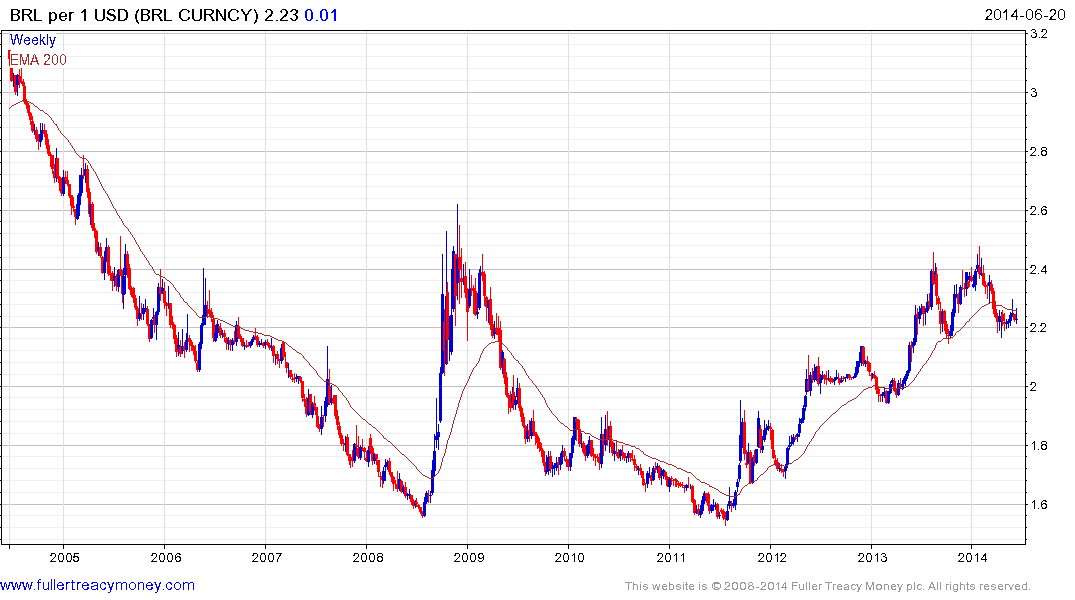
Additionally, while iron-ore and coal prices are still depressed, the majority of industrial metals have firmed up following steep declines. Brazil’s position as an oil exporter is also of benefit in the current environment.
Yesterday’s news that President Rousseff is ahead in the presidential election polls is not particularly welcome from a markets perspective because she has failed to tackle regulatory and bureaucratic roadblocks to growth during her administration. If Brazil is to succeed beyond the tailwind it is likely to experience from the cyclical recovery in commodity prices, these issues will need to be tackled by the next government.
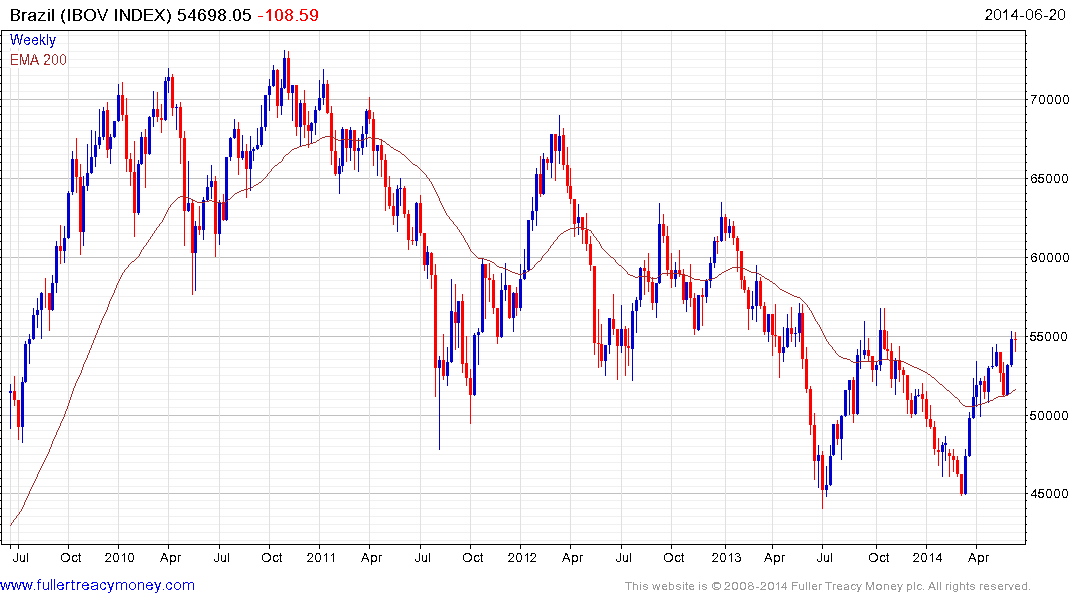
The Bovespa Index found support in the region of the 200-day MA for the first time in nearly three years from late May and a sustained move below 51,000 would be required to question medium-term upside potential.
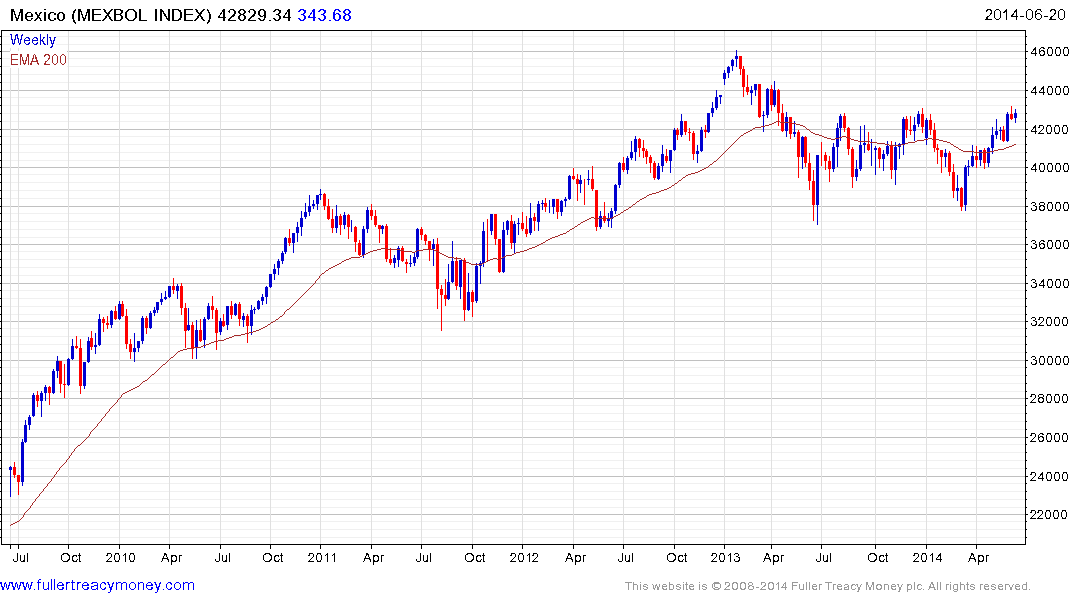
Elsewhere in Latin America, the Mexican Index is testing the upper side of a 12-month range and a sustained move below 41,000 would be required to question current scope for some additional upside.
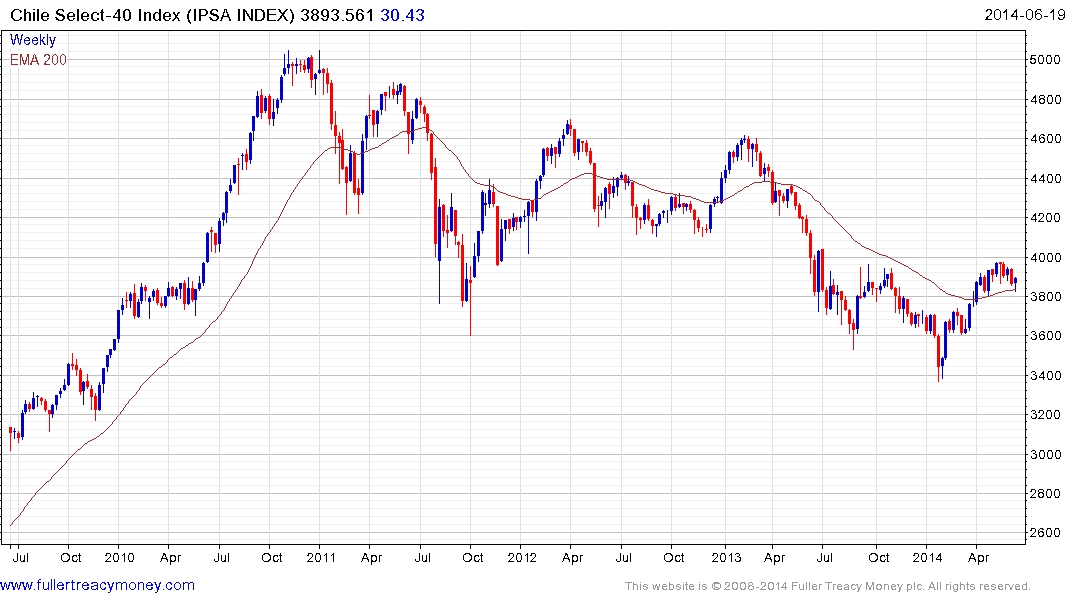
The Chile Select-40 Index found support this week in the region of the 200-day MA.
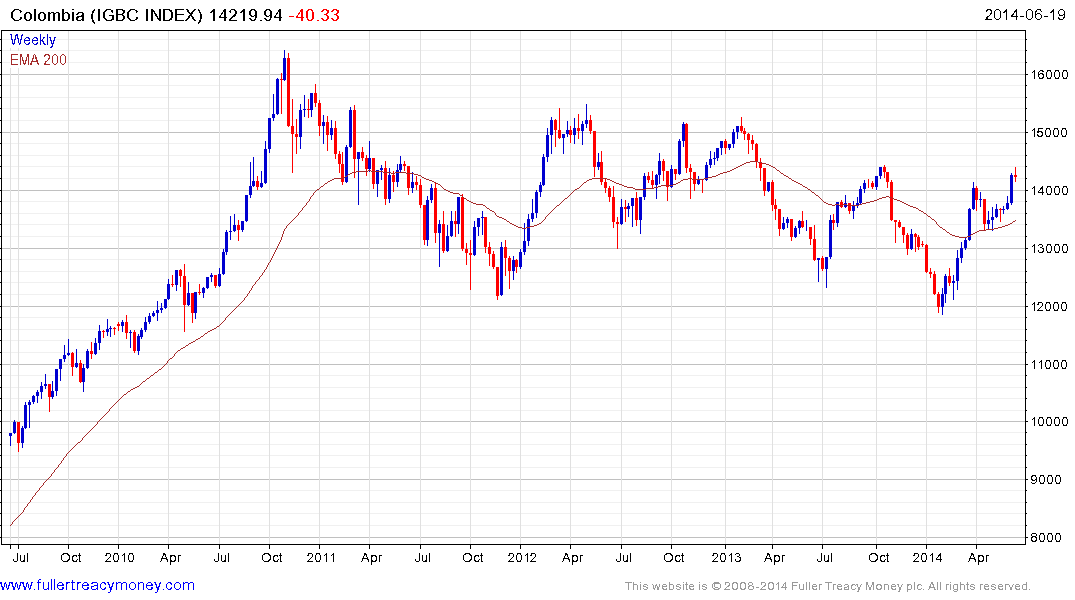
The Colombia Index this week posted its first higher major rally high in more than four years.
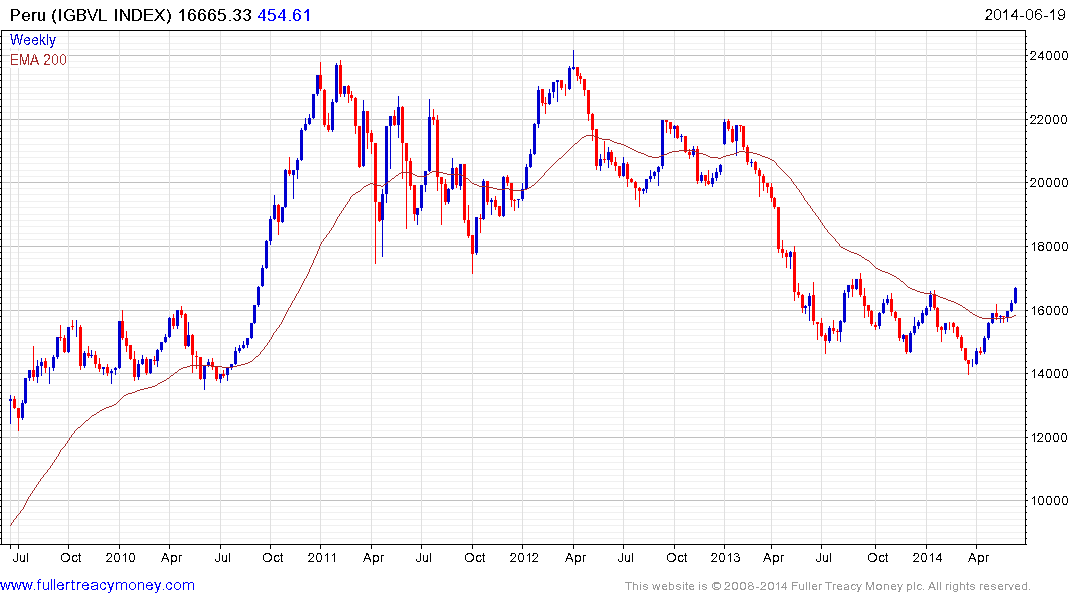
The Peru Index has rallied to break a more than two-year downtrend.
If we incorporate the commonality of the above charts into our analysis we can conclude that commodity-influenced markets are returning to positions of outperformance and rallying from relatively low bases.
Back to top


